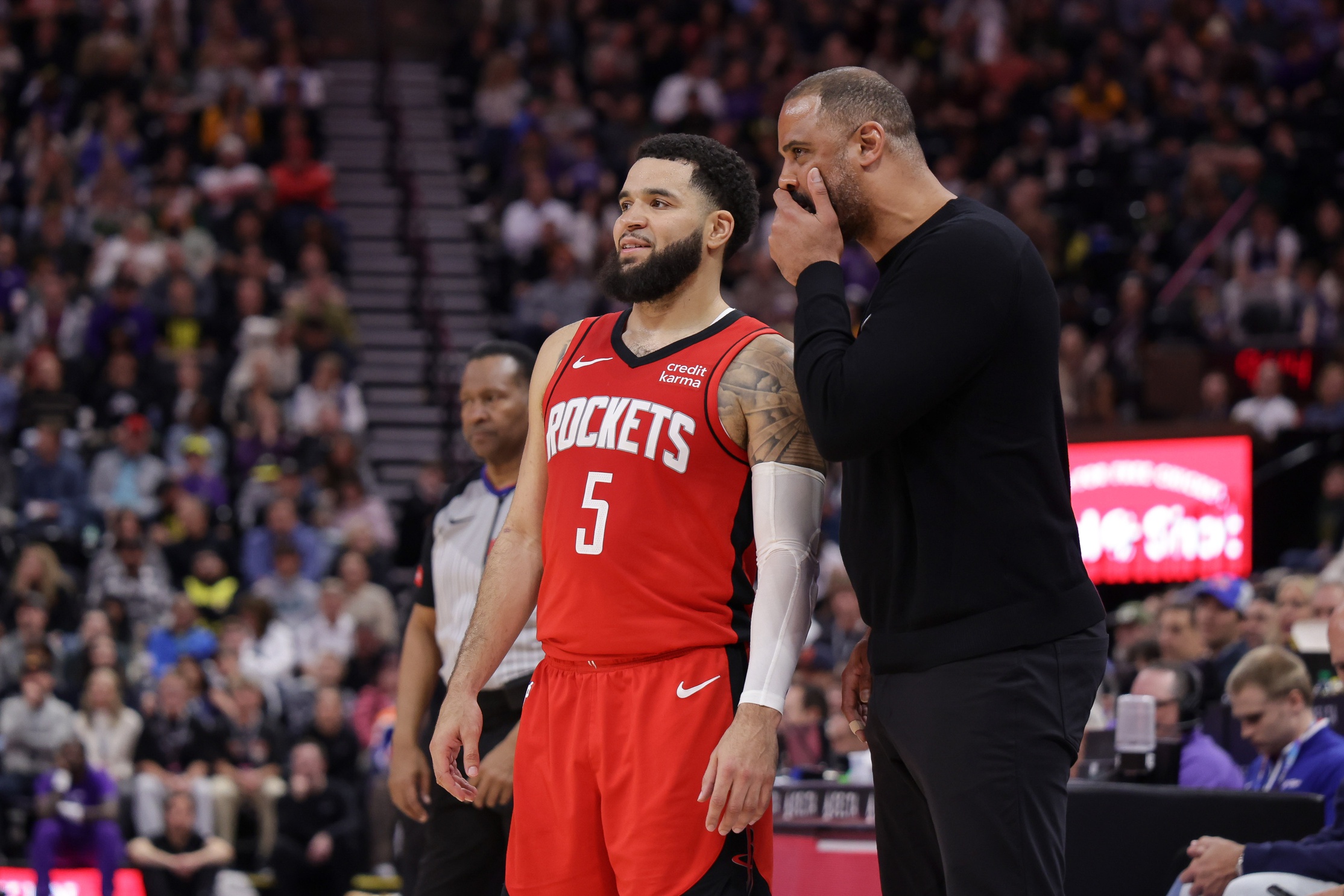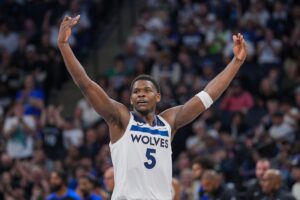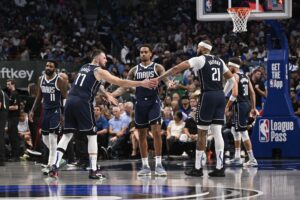The Houston Rockets were powered to a bounce-back season last year by their defense. Will they keep that same bounce in their step in 2024-25? The Rockets’ chances of actually improving on last year’s showing will be determined on the offensive end. Basketball is also generally just easier to talk about in terms of offense. But if the defense last year was a fluke, then the only way Houston will be talked about this year will be as a disappointment.
Projecting the Rockets’ Defense in Year 2 of Ime Udoka
So what did first-year head coach Ime Udoka do to make Houston’s defense so resilient in the first place? The team’s starting center, Alperen Sengun, hardly seems like a world-beater on that end. The team will need his offense, though, to have any hope of beating the world of explosive lead guards and deadly three-point shooting the NBA has become at the other end. That is, to compete with it, to defend it, Houston deployed some tactics to help him out.
And help him out they did. The team finished 10th in defensive rating. Of the top ten defensive teams, however, Houston pipped even the swampy Florida duo for the worst overall net rating at +0.9. Houston did minutely outperform them in offensive rating, but the defensive rating advantage was just enough to make up for it. The Miami Heat managed +1.8 in net rating, and the Orlando Magic achieved +2.1 (in no small part thanks to their young All-Star and one-time rumored future Rocket Paolo Banchero).
The Rockets Defense’s Secret Weapon… Mediocrity?
Interestingly, looking at NBA.com’s defense four factors, Houston was middle of the pack (15th exactly) in opponent turnover rate. However, they were eighth in offensive rebound percentage and fifth best in opponent effective field goal percentage. Unfortunately, that came at the cost of being second worst in the league at opponent free throws per field goal.
What that basically means is that Udoka encouraged his players to play physically, even at the cost of a few extra shooting fouls (a friendly reminder, for those similarly inclined to the confusion of the two, that true shooting is intruded on by free throw rate, whereas effective field goal percentage only accounts for threes being 50% more effective than twos). What he did not encourage was gambling for steals to force turnovers. Exciting prospect Cam Whitmore didn’t always get the memo, he spent much of his time on the bench… for gambling too much on steals.
As for giving up the number of offensive rebounds, that would seem to align with a strategy of chasing players off of the three-point line. Doing so leads to rotations, which create confusion on box outs, and give up inside position for long rebounds on the perimeter. Also, there’s the fact that Sengun is still slightly undersized at the five, and starting power forward Jabari Smith Jr, though a solid rebounder in spite of it, is built like a bowling pin.
So No Threes?
Except Houston didn’t really sell out on the three-point line either. Continuing their impressive trend of apparent mediocrity, Houston was, once again, 15th in opponent three-pointers attempted per game. Interestingly, however, that does improve to 10th when only considering catch-and-shoot threes. Meanwhile, Houston gave up the third-most attempted pull-up threes in the entire association. The team that gave up the most incidentally? The champion Boston Celtics, who are currently coached by Udoka’s former assistant, Joe Mazzulla.
So the Rockets’ defense, with some underwhelming defensive personnel, clearly employs a philosophy of nudging their opponents toward certain shots and more importantly, away from others.
Defending the Most Important Part of the Court
The Rockets allowed the fifth-fewest attempts within five feet of the rim last season. Also, of the four teams that allowed even fewer, only the Minnesota Timberwolves allowed a lower percentage—the Rockets 63.3, the Wolves 60.2. Indeed, of those five teams allowing the fewest shots within five feet, the Wolves appear to be the anomaly, featuring the only vaunted rim protector among them, last-gasp (according to Victor Wembanyama) DPOY Rudy Gobert.
The other four, the Rockets, Miami Heat, Golden State Warriors, and Sacramento Kings, all play largely without one. Miami’s Bam Adebayo and Golden State’s Draymond Green, though elite defensive big men specialize as versatile defenders, not rim deterrents. Meanwhile, the Kings are coached by Mike Brown, formerly an assistant with the undersized Dynasty Warriors.
The Rockets’ defensive philosophy is one of steering the offense away from the places they care about. The shots they try to deny are catch-and-shoot threes and those right at the rim. In particular, their collapsing defensive principles allow them to protect the rim in spite of lacking an intimidating interior presence. As a result, while Sengun may not have the long arms and springiness of a typical shot blocker, on opponent shots within five feet of the rim. His 62.8% conversion rate is remarkably similar to Anthony Davis‘ 62.6 and better than Dereck Lively II‘s 65.5. Sengun just gets a bit more help.
The Last Word
The Rockets’ defensive philosophy is something that should hold up this upcoming season, though coaches may be more prepared to gameplan against it should they feel the need. There could also be some athletic decline for key starting guard Fred VanVleet and trusty journeyman Jeff Green. But more experience and strength for younger players could feasibly offset that even if it occurred. More minutes for defensive menace Amen Thompson could help as well. All considered, Houston’s defense should remain their biggest strength next season. They just have to hope that their offense stops being such a weakness as to counteract it.






